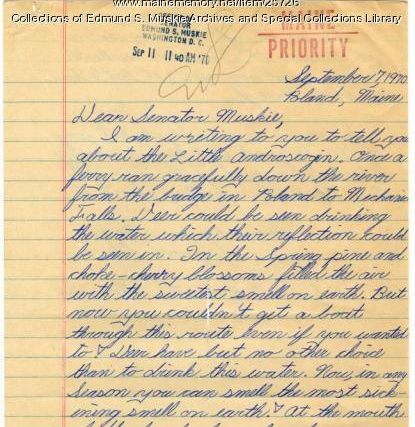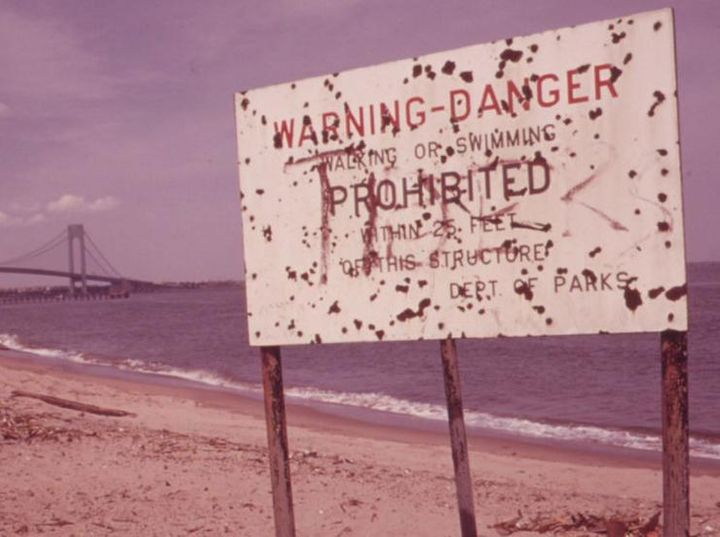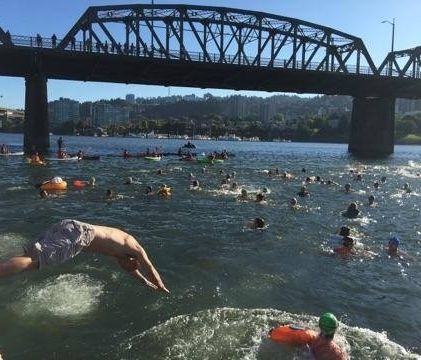In 1970, an eleven-year-old girl named Suzanne Clune from Poland, Maine wrote to her U.S. Senator, Edmund Muskie. Concerned about pollution in the Little Androscoggin River, she wrote, “Now in any season you can smell the most sickening smell on earth…frogs have been seen gasping for air… fish have been seen floating down the river dead… I am sick of the river like this. Please do something about it.”

In 1970, eleven year old Suzanne Clune from Poland, Maine wrote to her Senator, Edmund Muskie about pollution in the Little Androscoggin River. One year later he introduced what would be come the Clean Water Act.
Senator Muskie did do something about it. The following year he introduced what came to be known as the Clean Water Act. He knew the nation needed to act not only to clean up the pollution from paper mills and sewage in the Androscoggin, but to ensure the health of rivers and drinking water sources nationwide.
The goal of this landmark legislation, which became law a year later when Congress overrode a veto by President Richard Nixon, was as ambitious as it was necessary: to halt and reverse the fouling of America’s rivers, lakes and bays or, as the letter of the law put it, “to restore and maintain the chemical, physical, and biological integrity of the nation's waters.”
In 1972, that was a very tall order. At the time, two-thirds of the nation’s rivers, lakes and beaches were considered unsafe for fishing and swimming, and a federal study found almost a third of drinking water sources tested were contaminated with chemicals in excess of recommended limits.

Sign warning of polluted water on Staten Island Beach, June 1973.
The Potomac River was so choked with pollution, sewage and litter that President Lyndon B. Johnson had declared it “a national disgrace;” the Missouri River flowing through Omaha was spoiled by animal waste from the meatpacking industry; Ohio’s Cuyahoga River regularly caught fire due to oil slicks and industrial pollution; and the Hudson River became the poster child for sick rivers nationwide when PCB contamination threatened the health of fish and the people eating them.
Today, thanks largely to Clean Water Act programs, the percentages of impaired waters has been effectively reversed, with 65 percent now deemed fishable or swimmable. The rivers mentioned above provide just a few examples of dramatic turnarounds in river health from the Charles River in Boston to the Willamette River in Portland, Oregon.

Celebrating a cleaner Willamette River in downtown Portland, Oregon with a community swim, August 2016.
Today our rivers and lakes still face challenges, but there can be no doubt they are in much better shape than they were a half-century ago. Drinking water sources across the country are more secure, though as the tragic events of Flint, Michigan underlined, there is still much work to do.
Which brings us to our current dilemma. Today, President Trump and the majority in Congress seem hell bent on rolling back key safeguards for rivers and streams that are drinking water sources for one in three Americans. President Trump is proposing massive cuts to the Environmental Protection Agency, the agency designated by the Clean Water Act as the federal guardian of water quality, and appointed avowed EPA opponent Scott Pruitt as its Administrator.
In the 1970s, Americans like Suzanne Clune sparked a river revolution, demanding healthy rivers in their communities and clean water out of their taps. Now it’s time to rise up again.
Elected officials, from President Trump to Members of Congress, who choose to weaken protection of rivers and clean water and squander the progress we’ve made since the days when raw sewage fouled the Androscoggin, should know they are jumping into very murky water. Americans who value clean water won’t throw them a lifeline.
Swim at your own risk.
